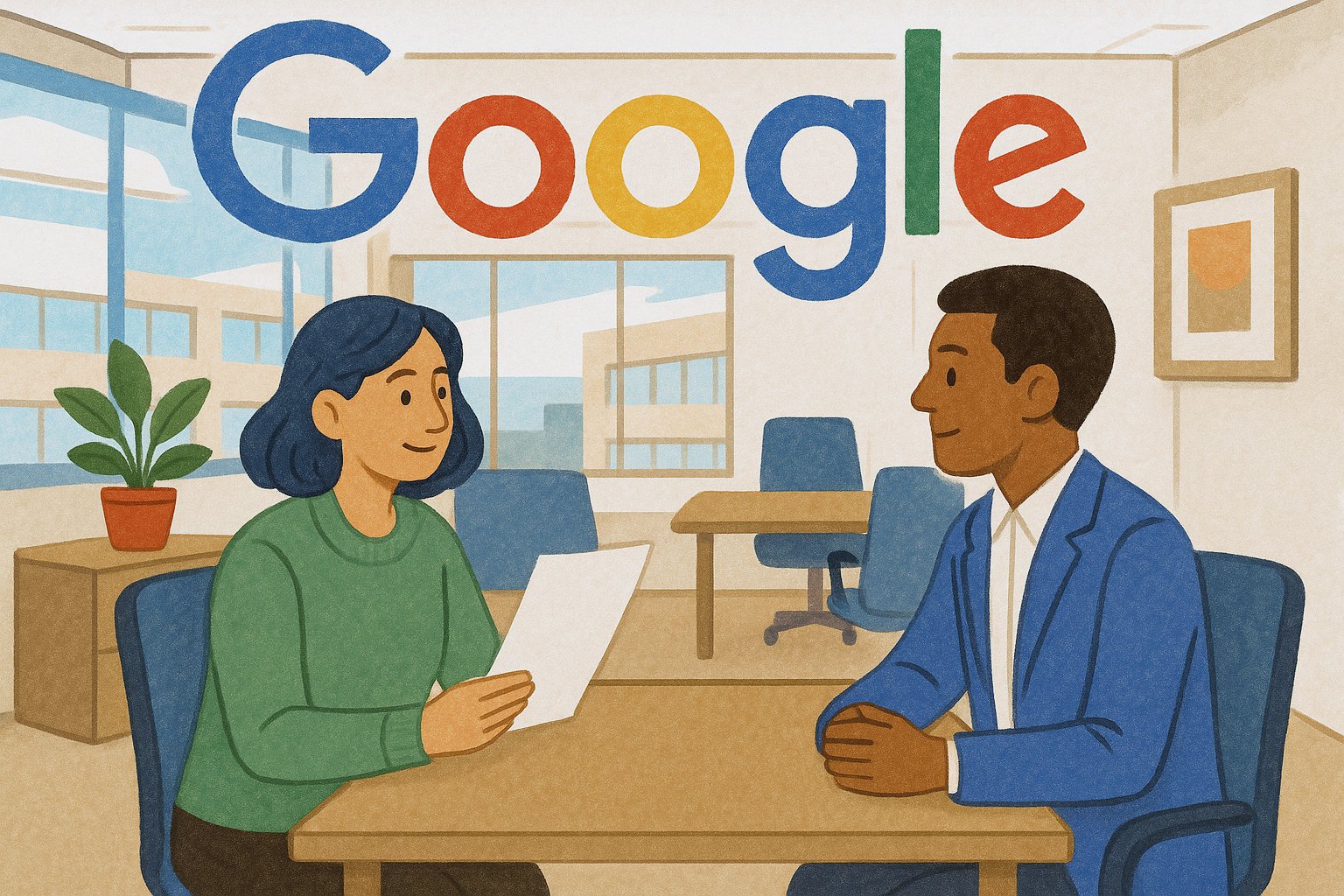My Interview Journey with Google

A few months ago, I had the opportunity to complete the final round of interviews for an Analytical Consultant position at Google in Germany. It was a meaningful and well-structured four-stage process that followed an initial CV screening.
Interviewing at top-tier tech companies like Google is often seen as both challenging and rewarding. For me, it turned out to be more than just a hiring process — it became a mirror that helped me refine how I present my work, think through problems, and operate under pressure in a virtual setting. Each stage shed light on a different aspect of my skills and prompted me to reflect on how I communicate, stay composed, and adapt in real time.
Stage 1: Initial Engagement
The journey began with an online conversation with a Google HR representative. We discussed how my professional background aligned with the role, my longer-term career aspirations, and my motivation for applying. I also appreciated getting a clearer sense of the team’s expectations and what working at Google might be like.
Soon after, I was invited to proceed to the next stage: a series of three technical interviews, scheduled over three consecutive days. Each session lasted 45 minutes and typically included 4–5 core questions, exploring theoretical understanding, practical applications, and real-world scenarios. Preparing for this stage required focused effort, especially in organizing my experiences into a clear and compelling professional narrative.
Stage 2: Exploring Technical Foundations
This stage focused on my domain expertise in Data Analytics, Sales, and Digital Marketing. The interviewer referred to specific points on my CV, leading to an in-depth discussion about a major project I had worked on, followed up with related technical and conceptual questions.
There was also a short SQL assessment — nothing too advanced, but enough to require some solid preparation. Beyond that, I answered scenario-based questions that tested my understanding of Digital Marketing principles and the Online Advertising ecosystem.
What stood out to me was that even seemingly simple questions could feel open-ended. The real challenge wasn’t just answering but organizing my responses with structure and confidence. Clearly framing my thought process often mattered more than aiming for the “perfect” response.
Stage 3: Case Analysis and Problem-Solving
This round was designed to assess my analytical thinking and problem-solving in context. After a brief introduction, I was presented with case studies touching on Sales, Online Advertising, and Digital Strategy. Each scenario involved a business challenge and required outlining potential actions and realistic solutions in a structured way.
The cases themselves weren’t unfamiliar, but the expectations were high. The interviewers weren’t just looking for a “correct” answer — they wanted to see how I approached the problem, broke it down, and reasoned through it step by step.
This round also reinforced the importance of understanding industry terms like CTR, CPA, and ROI. Staying calm, thinking aloud, and mapping out a structured response made a big difference. Overall, it became clear that the process of arriving at an answer was just as important as the answer itself.
Stage 4: Understanding "Googleyness" and Situational Responses
The final round was focused on behavioral questions and soft skills — essentially, how I handle real-world challenges, from interpersonal issues to high-pressure situations. This stage felt like a test of soft skills, communication style, adaptability, and cultural fit. The questions often involved hypothetical or past work situations. Common themes include navigating interpersonal challenges, resolving conflicts, managing pressure, and responding to setbacks.
I used the STAR method (Situation, Task, Action, Result) to stay organized in my responses, especially when questions came with layered follow-ups. In cases where I hadn’t faced an identical situation, I tried to draw parallels from similar experiences, staying honest and grounded in my responses. Maintaining a composed, positive, and engaged attitude felt most appropriate.
This was the stage where authenticity mattered most. While technical precision was key earlier, here it was about listening, communicating, and building understanding — staying composed and true to my working style helped me navigate it with more ease.
🎯 The Evaluation Process
After the interviews, my performance was evaluated by a hiring committee and benchmarked against internal criteria. These criteria vary by role and seniority level. While overall feedback was positive, my problem-solving depth was assessed as landing between an L3 and L4 level.
Ultimately, I was offered an L3 role — typically aligned with early-career professionals who have a few years of experience. Although the position I had initially applied for was scoped at a more senior level, I appreciated the transparency from the team. They acknowledged my aspirations and shared that they would stay in touch regarding future opportunities that might be a stronger match in terms of level and responsibilities.
📌 Final Thoughts
This experience has left a lasting impression on me — not just because of the company name, but because of the rigor and intentionality of the process. Each stage challenged a different part of my skill set and helped me see my strengths and blind spots with greater clarity. While the outcome didn’t unfold exactly as I had imagined, I’m grateful for the opportunity and the professional insights gained along the way.
The journey taught me that each interview, regardless of the outcome, contributes to our evolution and understanding of our career objectives.